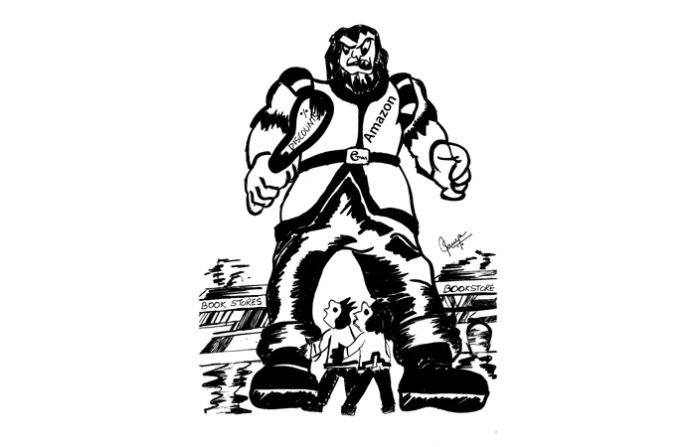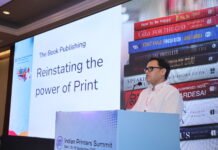Slowly but steadily, the refusal of the publishing community to understand technology and its impact on the business model of publishing and distribution is pushing it towards extinction. Mega mergers of monoliths with the same skill sets like the Penguin and Random House may delay the process by a couple of years but cannot stop it. An opinion feature by Sandip Sen.
Slowly but steadily, the refusal of the publishing community to understand technology and its impact on the business model of publishing and distribution is pushing it towards extinction. Mega mergers of monoliths with the same skill sets like the Penguin and Random House may delay the process by a couple of years but cannot stop it. An opinion feature by Sandip Sen.
One of the big five conglomerates, HBG has a revenue base of US$ 2.5 billion (Rs. 15,000 crore) but struggled when the US$74 billion Amazon refused to take pre-orders in 2014 when HBG did not conform to Amazon’s new discount structure for sales on its platform. Perhaps if Hachette had invested in technology start-ups or set up parallel distribution channels or radio stations or film companies to disseminate content through alternate media channels instead of buying big brand publishers, it may have been a different story today.
Leveraging technology
The publishing industry is agonized by Amazon’s muscle and its throttling of Hachette’s US title sales whose contract was due for renewal, but the fault also lies in the publishers’ inability to build its own electronic selling platforms. Amazon was nowhere on the horizon when the HBG began to shape in the late 1960s. Today Amazon has seven times the annual revenues of the big five publishing conglomerates combined. The publishers have had plenty of time and capital to acquire technology and scale up their platforms. The failure to see the future of publishing as just one part of the great content outflow, have confined them to be midgets, in a world they once controlled.
It is important to stop living in silos and believe that the world of creativity can prosper even without new delivering and monetizing techniques. Publishers worldwide lobby endlessly to curb the discount practices of online retailers but rarely build their own discovery, sales and distribution channels.
Bad in commerce
Although no publisher will agree, they have enjoyed cushy profit margins and one-sided author agreements for decades. The work was creative, stimulating, leisurely and relaxed. The deliverables were never challenged because the work was considered intellectually supreme. In a day when content was abundant they often made it scarce by slow pacing the entry and sale of new authors. Self-publishing had to arrive because publishers were unable to process the mass of creative content that was available and were looking for an audience. Even published authors often complained that the sultans of publishing houses took more time to edit manuscripts than they took to write them. Today a third of books sold on the Amazon ePlatform are selfpublished.
Most publishing houses take nine to 24 months to publish a book after the final script is received from the author. They take 12 to 18 months to pay the first royalty after the book is published. In the new age ‘content as goods’ makes it a deliverable commodity that must have a reasonable processing and delivery time for good business. A traditional author may have to wait for nine months for a book to be published and another 18 months for the publisher to pay the first royalties. Online retailer Amazon has an easy ‘do it yourself’ self- publishing platform CreateSpace or Kindle Publishing where you can self-publish a book in few hours and get paid 30 days after the first sales. The payment cycle for content produced by the author drops from 27 months to 30 days flat. She also gets a royalty that usually exceeds 30% from the online retailer, almost twice of what most publishers would offer.
Content as a commodity
It is important for publishers to see content today as ‘deliverable goods’ that they need to push out of the door as efficiently as possible. If publishers see content as ‘deliverable goods’ they would devise a process and help make it as scalable as any commodity. Today after its mega merger Penguin Random House is said to have a capacity to produce just 1,000 books a month. Bezos who started Amazon from his garage to sell books on the internet in 1994 has the capacity to self-publish more books each day, and a revenue twenty times as big as Penguin Random House.
Amazon today has 50% of the eBook market and sells 25% of the books printed in Europe and the US. Google has 90% of the search market in Europe and 67% of the search market in the US. However, it is not only Amazon and Google who are knocking at the door. Apple, Adobe, Proquest and many others are all owning, aggregating and creating content on various platforms. These companies are creating solutions and honing strategies to leverage content and create scalable revenues.

















